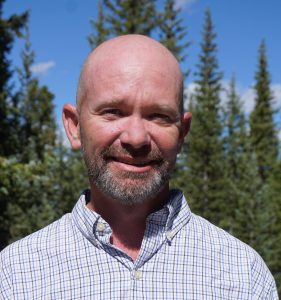GIS expert: Digital twin, augmented reality gaining traction

Trip McLaughlin, GISP, is project executive of North Line GIS, now IMEG, a full-service GIS firm in Breckenridge, CO, which recently joined IMEG Corp. Trip discusses the field of GIS and related topics in the following Q&A.
Question: What is GIS, what does it do, and who uses it?
Answer: GIS stands for “geographic information system” and is a tool to store, analyze, visualize, and share spatial data. It is used across many industries and throughout departments in organizations. While commonly used for asset and cadastral (property boundaries and real estate) management, GIS is also used to associate tabular information with spatial data. For example, an economic development office can use location intelligence to visualize and analyze business and community growth potential, combining data about demographics, lifestyle, and spending. Public works and utilities may use it for asset tracking, work order management and capital improvement planning. GIS has applications in most all aspects by providing a dynamic tool for analysis and sharing of information.
Q: What led you into the field of GIS?
A: I have always been a map fanatic. In college, I was exposed to GIS through geology and geomorphology classes. At that time, GIS was mainly command line development without a GUI (graphical user interface). I had experience in programming, so it was a good fit for me. As I moved through the GIS classes, I recognized the analytical power and insights it could provide on a spatial basis. That experience took me in the direction to make a career out of it.
Q: What differentiates your team from the competition?
A: We feel the close attention we pay to our clients’ needs is the biggest difference from our competition. There are several companies that provide the same or similar services, but maintaining close client relationships takes us further. We have a very talented team that collaborates to develop successful solutions. We also value our relationships with our business partners such as Esri and Eos. By working closely with them, we can better plan for what is evolving in the industry from the hardware and software side.
Q: What are some of the biggest needs or challenges facing your clients?
A: The biggest need is to have a central hub in the organization to go to for data and applications. Our clients often need a tool to share information with other departments. A good example is when a streets department is going to be repaving a street and the water department is going to be replacing a line. Through GIS they can see when the work is planned so they are not doing the same job twice. The biggest challenge tends to be organizational acceptance and developing a budget for the GIS. Often boards and councils do not understand the power of GIS and are slow to commit the funds initially to accomplish the goals of their staff.
Q: What is your philosophy of the consultant/client relationship?
A: We have always sought to improve organizational efficiencies through the use of GIS. We feel this is best accomplished by truly understanding our clients—not just the needs of the GIS but also their user base, workflows, and overall organization. We listen to our clients to make sure we are addressing their needs and advise them on the best methodology to meet the end goals of the organization.
Q: What excites or motivates you most about the work you do?
A: I enjoy developing solutions for clients that will make their job easier and more efficient. It’s rewarding when you develop a solution, the client embraces it, and then wants to do more with GIS.
Q: What new developments or opportunities in GIS are coming?
A: GIS is always evolving and presenting new opportunities. Several things that stand out are the ability to work in a true digital twin where the 3D space is utilized, and sensors are integrated with GIS to provide a real-time GIS. This is done through a variety of products such as ArcGIS Indoors, GeoEvent Server, and more that are reasonably new to GIS. Bringing in augmented reality to utilities presents another new tool in GIS that is still in its infancy, but I think will begin to gain traction. Watching GIS grow into a system of systems—even in smaller communities—and becoming the central hub to access information is very encouraging.
Contact Trip McLaughlin at Trip.E.McLaughlin@imegcorp.com.







